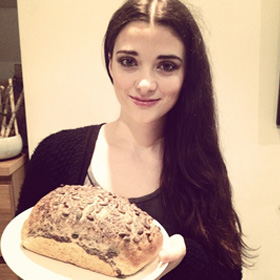Our review of Hangmen
A cat and mouse with the McDonagh stamp
 Teia Fregona, December 8th, 2015
Teia Fregona, December 8th, 2015Comical, commanding, effortless
Hangmen is as black a comedy as they come
Please note that this is a review from the 2015 West End production of Hangmen. We will update this webpage as soon as we have an up-to-date Broadway review.
Currently riding a wave of critical acclaim that has bolstered it since its debut at the Royal Court Theatre, Hangmen is as black a comedy as they come; its ability to elicit shock and laughter at every turn gives new meaning to the term gallows humour (pun very much intended). Fittingly, the play begins with a hanging, a high-octane opening scene that careens so quickly from grisly to comic and back again that I had trouble keeping up. I found the ensuing on-stage madness a conundrum at first, but on my way out I caught a glimpse of the name Martin McDonagh (the writer behind the dark delights of In Bruges and The Cripple of Inishmaan) and everything I had just watched dawned with crystal clear clarity.
Set at the height of the swinging sixties, Hangmen follows Harry Wade, the second-best hangman in the UK (just don't say that to his face) two years after the country's last execution. A rough-hewn brute of a man, Wade bears no scars of his former career on his imposing exterior yet it quickly becomes obvious that he may still be disturbed after all... The pub he runs with his wife is resolutely not swinging, which makes it all the more obvious when strangers make use of this local watering hole. Cue the streetwise Southerner Mooney and his attention-seeking swagger. Prone to bouts of eloquent rambling and suspicion-raising fury, Mooney is a catalyst for turmoil in the Wade's already colorful lives.
I will admit I found it difficult to connect with Hangmen's Northern articulations at first, but by the time Act 2 rolled around I was heavily invested in the lilts, poetry, and rhythms of the accent and dialogue (an area in which McDonagh's script shines). A time and place is so effortlessly evoked that at first, I thought the play had been written in the very era it portrays. An extremely clever use of space and moving set design causes my jaw to drop momentarily.